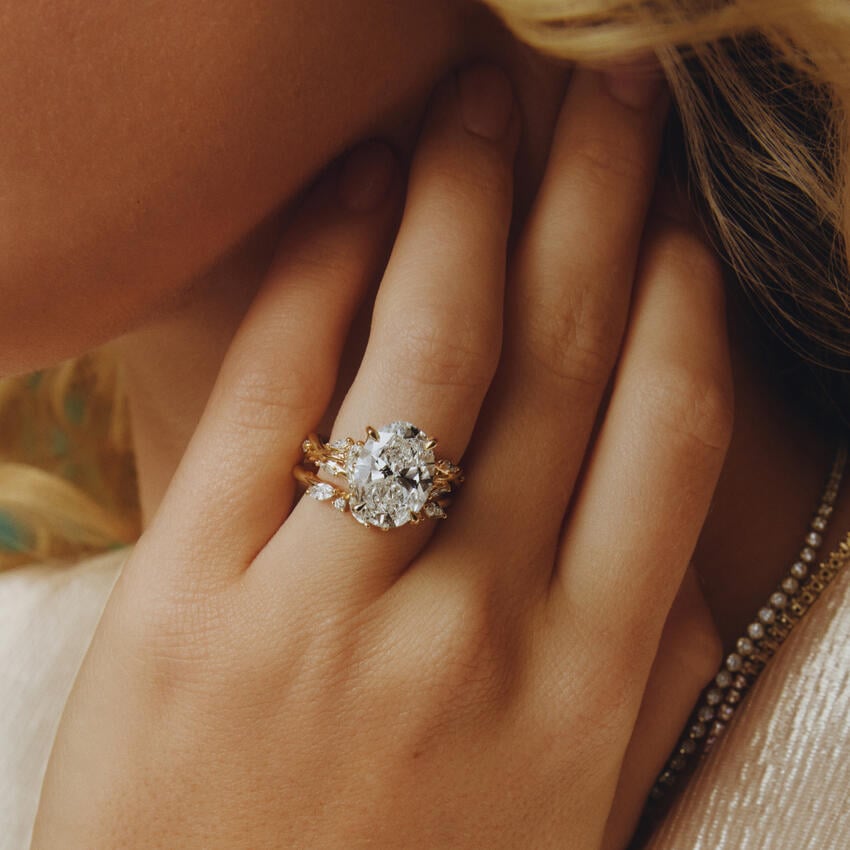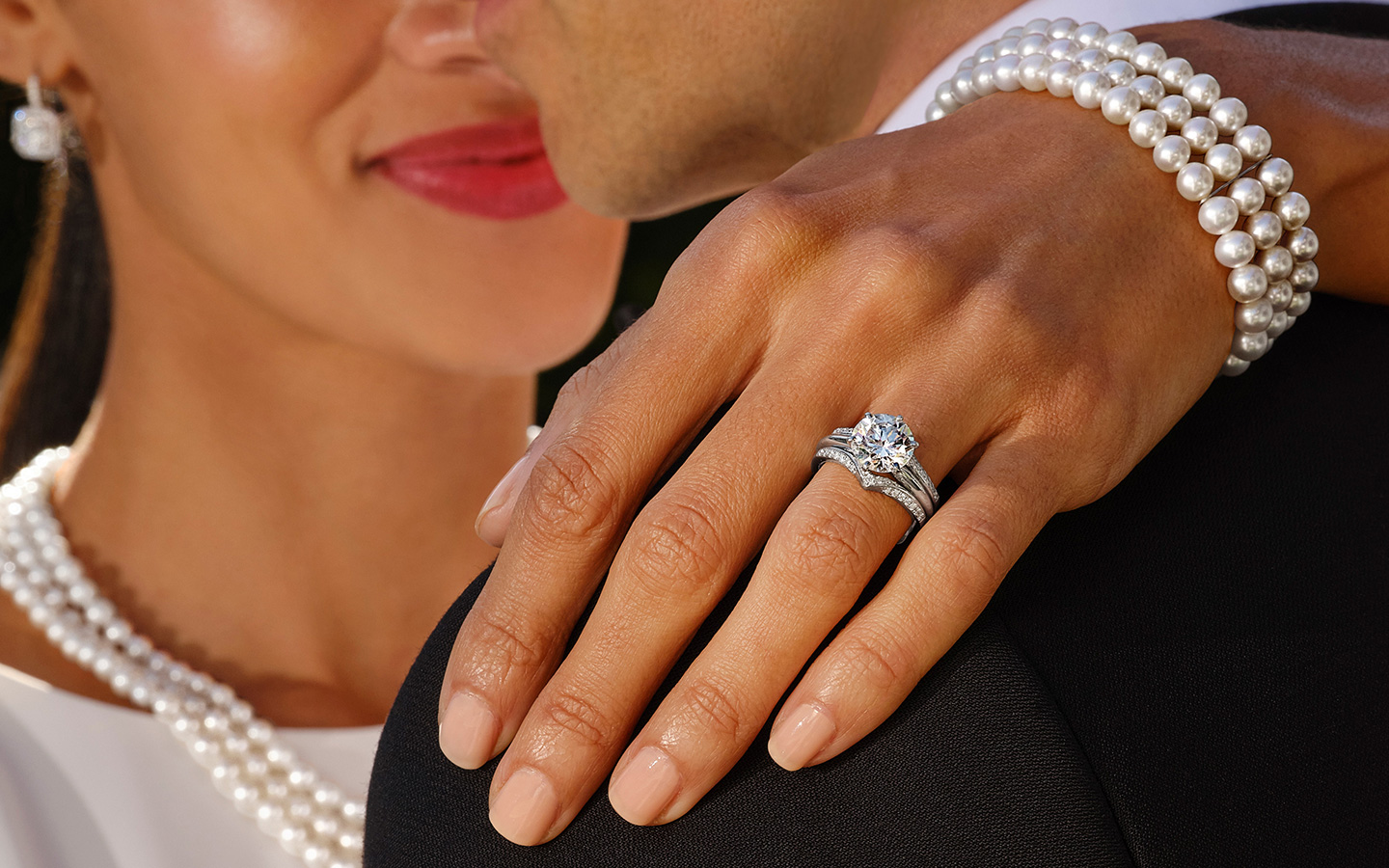The Advantages of Picking Laboratory Grown Diamond Involvement Rings for Your Proposition
Lab-grown Diamond involvement rings present a compelling option for couples considering their proposal alternatives. These rubies are ethically sourced and created in regulated atmospheres, attending to both moral and environmental problems. Furthermore, they supply significant price financial savings, permitting larger rocks or one-of-a-kind styles. With developments in innovation, the appeal of lab-grown rubies continues to grow. Understanding these advantages can affect a pair's decision-making process in profound methods. What variables should be prioritized when making this option?
Moral Sourcing and Ecological Influence
As consumers significantly focus on sustainability, the increase of lab-grown Diamond engagement rings uses an engaging option to typically extracted rubies. These lab-created gems are created in controlled settings, markedly reducing the honest dilemmas related to Diamond mining. Standard mining typically entails exploitative labor techniques and contributes to environmental deterioration, consisting of deforestation and habitat devastation.

Cost-Effectiveness: More Worth for Your Budget
Lab-grown Diamond involvement rings not just align with moral worths yet additionally offer substantial cost benefits. Normally, these diamonds can be priced 20% to 40% reduced than their extracted counterparts, permitting pairs to maximize their budget plans without sacrificing quality. This cost-effectiveness makes it possible for customers to purchase larger stones or higher-quality settings, enhancing the general visual of the ring.
Additionally, the transparency in prices related to lab-grown rubies gets rid of the covert prices usually associated with extracted diamonds, such as certification and transportation costs. Pairs can additionally take advantage of reduced insurance policy costs as a result of the minimized value of lab-grown rubies.
Therefore, choosing a lab-grown Diamond engagement ring ends up being a financially wise choice, supplying couples with more value for their cash. This affordability not just permits for a greater selection but also equips pairs to select a ring that genuinely mirrors their love and commitment.
Identical Physical and Chemical Features
The allure of lab-grown Diamond engagement rings lies not just in their moral manufacturing however additionally in their exceptional physical and chemical homes. These diamonds are created in controlled research laboratory settings that imitate the natural conditions under which diamonds develop in the Planet. Because of this, lab-grown rubies have the exact same crystal framework and solidity as their mined counterparts, rating a best 10 on the Mohs range.
Both sorts of rubies contain carbon atoms arranged in a crystal lattice, making sure identical optical and physical traits. Lab-grown diamonds display the exact same radiance, fire, and scintillation as all-natural rubies, making them identical to the naked eye. Advanced gemological screening is needed to separate in between both, emphasizing their credibility. This parity in residential or commercial properties allows consumers to enjoy the beauty and sturdiness of diamonds while making an environmentally conscious choice.
Wider Selection of Choices
Laboratory grown up Diamond engagement rings offer a broader array of style choices that cater to varied preferences and preferences. Their ability to be customized permits pairs to create unique items that show their individual design. This boosted versatility not only boosts the ring's emotional value yet additionally makes it a much more individual option.
Distinct Design Choices
While conventional diamonds usually include limited style options, the rise of lab-grown Diamond involvement rings has actually opened a more comprehensive range of distinct designs and settings. This innovation permits couples to check out more creative layouts, ranging from vintage-inspired to modern-day geometric shapes. Lab-grown rubies can be crafted in various cuts, consisting of oblong, pear, and heart shapes, giving adaptability that appeals to diverse preferences. Additionally, the capability to pair these diamonds with unusual band materials, such as rose gold or fairly sourced steels, enhances the general visual. With distinct settings like halo or bezel, these rings can be individualized to reflect private stories and choices, making each engagement ring not simply an icon of love, but likewise a standout item of art.
Modification Possibilities
A growing rate of interest in lab-grown Diamond involvement rings has resulted in a boost in modification opportunities, allowing couples to produce genuinely tailored items. Unlike traditional diamonds, lab-grown options can be tailored to fit private tastes and preferences. Couples can select from a bigger selection of dimensions, forms, and shades, allowing them to pick a ruby that reverberates with their special style. Furthermore, personalization prolongs beyond the Diamond itself; setups can be made to enhance the picked stone, whether one chooses classic, modern, or intricate designs. This adaptability not just improves the emotional significance of the ring yet additionally enables a much more budget-friendly approach, as couples can prioritize features that matter most to them without endangering on top quality.
Transparency in the Diamond Sector
Exactly how can consumers browse the complexities of the Diamond sector when transparency remains a crucial concern? The typical Diamond market frequently does not have clear info concerning the beginning and honest sourcing of rubies. This uncertainty can result in customer mistrust and moral issues surrounding dispute diamonds and ecological impact. Alternatively, lab expanded diamonds use a service to this openness issue. These rubies are created in controlled settings, enabling customers to access thorough details regarding their provenance.
Moreover, reliable sellers of laboratory grown diamonds commonly offer certifications that outline the details of the Diamond's production, including its size, high quality, and the modern technology used. This degree of transparency empowers consumers to make educated options, straightening their acquisitions with individual values. As awareness of dishonest methods in the Diamond market expands, the clear, moral nature of laboratory expanded rubies placements them as an engaging alternative for conscientious consumers seeking engagement rings.
Supporting Development and Innovation
As the demand for fairly sourced gems boosts, supporting advancement and innovation in the lab-grown Diamond sector becomes vital (lab grown diamond engagement rings). Lab-grown rubies, produced via sophisticated approaches such as High Stress Heat (HPHT) and Chemical Vapor Deposition (CVD), visit homepage represent a significant shift in the Diamond sector. Purchasing these innovations not only improves the quality and accessibility of diamonds but additionally lowers ecological effect compared to typical mining techniques
Developments in manufacturing methods have led to extra effective procedures, resulting in decreased costs for consumers. This technical development fosters competitors, engaging standard Diamond producers to reconsider their methods and adopt more sustainable strategies. By supporting lab-grown rubies, consumers add to a market that focuses on ethical sourcing and technology, ultimately advertising an extra accountable and eco conscious fashion jewelry sector. Accepting this brand-new period not only benefits customers yet also motivates ongoing advancements in gemstone manufacturing technologies.

Personalization and Customization Alternatives
Laboratory grown Diamond interaction rings offer a series of personalization and customization alternatives that accommodate specific preferences. Customers can choose distinct layout options and customized stone characteristics, making sure that each ring reflects individual style and relevance. This ability to tailor enhances the psychological value of the ring, making it a purposeful symbol of dedication.
Special Layout Options
What makes a ruby involvement ring absolutely special? Its distinct style options enable for deep customization, mirroring the pair's distinctive love tale. Laboratory produced rubies use a selection of choices, from different cuts and settings to custom engravings. Couples can choose from traditional solitaires to elaborate halo designs, ensuring their ring straightens Learn More with individual preferences. Furthermore, the adaptability of lab grown rubies makes it possible for the unification of tinted gems, such as emeralds or sapphires, enhancing individuality. Modification encompasses the steel choice, whether it's white gold, yellow gold, or rose gold. This liberty in style not only creates a distinctive item but additionally personifies the couple's commitment, making the involvement ring an unforgettable symbol of their one-of-a-kind trip together.
Tailored Rock Characteristics
When thinking about the qualities of a ruby interaction ring, pairs discover that tailored stone alternatives considerably enhance the customization process. Lab-grown rubies provide a series of adjustable features, permitting couples to choose the size, form, and shade that finest reflects their special design and preferences. This adaptability enables people to create a ring that represents their love story. Furthermore, pairs can choose certain clarity levels and reduce styles, guaranteeing that the Diamond not only satisfies their visual wishes yet also fits their budget plan. With lab-grown rubies, the opportunity for personalization includes setting types and metal selections, further enhancing the ring's uniqueness. Inevitably, tailored stone attributes encourage couples to develop a purposeful engagement ring that really represents their partnership.
Regularly Asked Inquiries
How Do Lab Grown Diamonds Contrast to All-natural Rubies in Regards To Durability?
Lab grown diamonds and natural diamonds display similar toughness, as both are made up of carbon and share equivalent solidity degrees. This makes them just as immune to damaging and damages, ensuring longevity in any jewelry setting.
Can Laboratory Grown Diamonds Be Resold or Appraised Like All-natural Diamonds?
Laboratory expanded rubies can undoubtedly be re-selled and assessed likewise to natural diamonds. Their resale value may vary due to market understandings and the growing availability of lab-created alternatives in the precious jewelry market.
What Is the Difference in Glimmer In Between Lab Grown and Natural Diamonds?

Do Laboratory Grown Diamonds Include Accreditations Like All-natural Diamonds?
Laboratory grown diamonds do include accreditations, similar to natural diamonds. These certifications validate their top quality, consisting of variables like cut, shade, quality, and carat weight weight, ensuring customers get a trustworthy evaluation of their purchase.
Just How Are Laboratory Grown Diamonds Made in the First Location?
Lab expanded rubies are produced through 2 main methods: High Stress High Temperature Level (HPHT) simulates natural procedures, while Chemical Vapor Deposition (CVD) utilizes gases to deposit carbon, enabling regulated Diamond development in a lab environment. lab grown diamond engagement rings.
As customers progressively focus on sustainability, the increase of lab-grown Diamond involvement rings provides an engaging option to traditionally extracted diamonds. In addition, the transparency in rates connected with lab-grown rubies gets rid of the surprise expenses often linked with mined rubies, such as certification and transport costs. Lab-grown diamonds show the same luster, fire, and scintillation as natural rubies, making them indistinguishable to the naked eye. While typical diamonds usually come with limited style options, the increase of lab-grown Diamond involvement rings has opened up a wider range of distinct designs and setups. Lab-grown diamonds, produced via innovative methods such as High Pressure High Temperature Level (HPHT) and Chemical Vapor Deposition helpful resources (CVD), stand for a significant change in the Diamond sector.